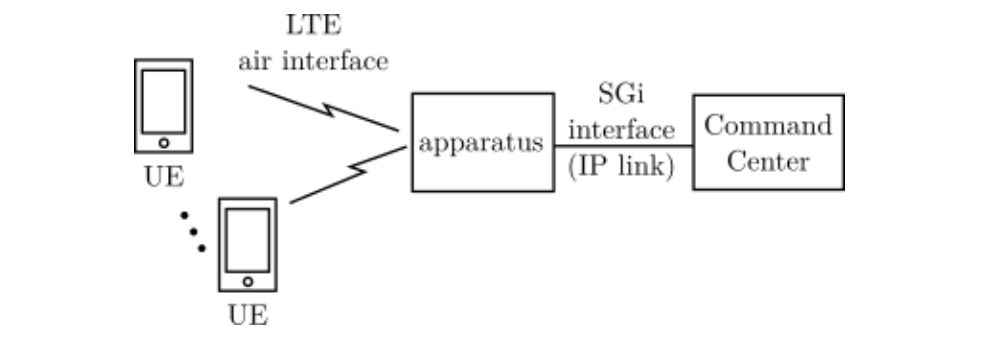This innovation is a compact and innovative Long Term Evolution (LTE) communication architecture designed for rapid deployment in isolated or emergency scenarios. The invention integrates various LTE network components—including the eNodeB, MME, SGW, PGW, HSS, and PCRF—into a single, standalone module known as the iCAM (integrated Core and Access Module). This system facilitates direct communication between User Equipment (UE) and an Application Server (AS) without relying on external LTE infrastructure. Employing a Software Defined Networking (SDN) paradigm, it separates the control and data planes for efficient operation. The solution enables traditional LTE UEs to connect seamlessly while significantly reducing system latency and deployment time, making it ideal for urgent or infrastructure-less communication requirements.
Conventional LTE communication systems are infrastructure-heavy, requiring multiple network elements and high deployment times. This becomes a critical bottleneck in emergency scenarios—such as disaster response or military operations—where communication must be established swiftly in remote or disconnected regions. Existing networks also mandate connectivity to the public Internet, which is either undesirable or unavailable in such cases. These challenges highlight the urgent need for a lightweight, rapidly deployable LTE communication system that works independently of external network dependencies.
- Integrated Architecture: The iCAM module combines all core LTE network components—including eNodeB, MME, SGW, PGW, HSS, and PCRF—into a single portable unit. This significantly simplifies the network structure and reduces hardware requirements. It allows for end-to-end LTE communication from a single device.
- Rapid Deployability: The system is designed for quick setup in remote or emergency environments. It eliminates the need for existing infrastructure like public internet or central towers. This makes it ideal for mission-critical scenarios like disaster zones or isolated terrains.
- Software Defined Networking (SDN) Based: It separates control and data planes using SDN principles for better management and scalability. This architecture enhances flexibility and enables efficient handling of signaling and data flows. It also helps reduce processing delays within the system.
- Compatibility with Commercial Devices: The network supports standard LTE devices such as smartphones, tablets, and IoT gadgets without any modification. This means users can connect to the system seamlessly using their existing equipment. No additional hardware or configuration is needed on the user’s end.
- Optimized Control and Data Flow: The invention removes redundant protocol layers like S1AP, X2AP, SCTP, and GTP-C, reducing signaling overhead. Data flows directly from UE to the AS using a simplified routing mechanism. This leads to faster transmission and lower latency.
- Enhanced Quality of Service (QoS) Management: A built-in convergence layer ensures traffic routing while enforcing QoS parameters as defined by the integrated PCRF. The system guarantees stable performance and prioritizes critical communications. This is crucial in time-sensitive and emergency applications.
A prototype of the proposed system has been developed and tested in a simulated environment using real traffic data. It includes a prediction engine for traffic forecasting, a modeling engine for cost-revenue analysis, and an optimization engine to identify the most energy-efficient network state while maintaining QoS. The prototype also demonstrates dynamic base station reconfiguration and intra-circle roaming to manage low-traffic periods efficiently.
The patent includes complete specification, a detailed claim set, and supporting figures. The patent is suitable for immediate prototyping and development for real-world LTE deployments.
3
This technology reduces energy consumption in telecom infrastructure, contributing to environmental sustainability and reducing operational costs for mobile operators. It aligns with India's green communication goals and can extend affordable mobile coverage to rural areas by making networks more energy-aware and cost-efficient.
- Public Safety Networks: Useful during natural calamities, terrorist attacks, or hostage situations where conventional networks are down
- Disaster Recovery: For restoring communication in disaster-hit zones rapidly
- Defense and Tactical Communication: Ideal for battlefield or military base communication without relying on public networks
- Remote Healthcare Connectivity: In areas lacking communication infrastructure, enabling telemedicine and emergency support
- Industrial and Mining Operations: For secure, private network deployments in geographically isolated locations
- IoT Deployments in Rural Areas: Where centralized infrastructure is not viable, but data needs to be collected and transmitted locally
Geography of IP
Type of IP
201721017349
413115

